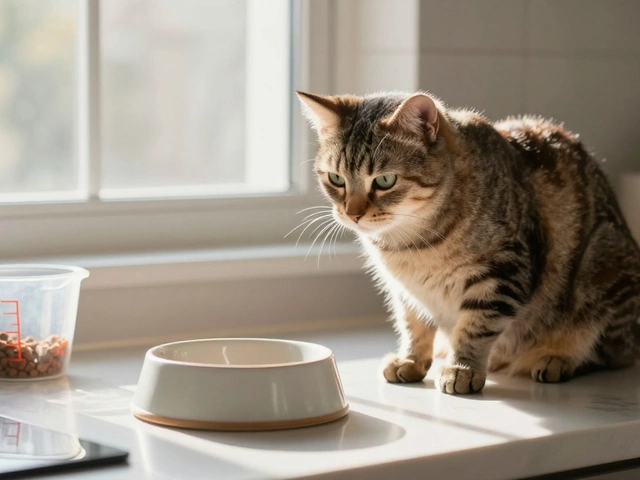Understanding Cat Behavior: Simple Tips to Decode Your Feline
If your cat has ever stared at a wall, suddenly sprinted across the room, or knocked a glass off the counter, you’ve probably wondered what’s going on in that little head. The good news is cat behavior isn’t as mysterious as it seems. By watching a few key signals, you can tell if your cat is happy, scared, or just bored. This guide breaks down the basics so you can respond the right way.
Reading Body Language: The Basics
Start with the tail. A puffed‑up tail means your cat feels threatened, while a slowly swishing tail often shows mild annoyance. When the tail is upright with a tiny curl at the tip, that’s a friendly greeting. Ears are another clear sign—forward ears mean curiosity, flattened ears signal fear, and slow twitches often indicate irritation.
The eyes tell a story too. Slow blinking is a cat’s way of saying, “I trust you.” Try returning the slow blink to let your cat know you’re on the same team. Wide, dilated pupils can mean excitement or fear, depending on the context. If the pupils are tiny, your cat might be in bright light or feeling aggressive.
Common Behaviors and What They Mean
Sudden bursts of energy, often called “zoomies,” are normal. Cats release built‑up energy by sprinting, leaping, and pouncing. If your cat does this after a nap, it simply needs to burn off a little excess energy. Provide toys or a short play session to keep them satisfied.
Knocking things over isn’t always mischief. Cats love to test objects for stability, a leftover instinct from hunting. Redirect this curiosity with puzzle feeders or a variety of safe toys that encourage problem‑solving.
When a cat kneads your lap, it’s recalling kittenhood—pressing against a mother’s belly to stimulate milk flow. It’s a sign of comfort and trust, so enjoy the massage. If they start head‑butting you, they’re marking you with scent glands and showing affection.
Scratching is a natural need. Cats sharpen claws, stretch muscles, and claim territory. Providing a sturdy scratching post or pad saves your furniture. Place the post near the area they like to scratch, and use catnip or a dab of tuna juice to make it more inviting.
Excessive meowing, especially at night, often points to boredom or a health issue. Rule out medical problems with a vet visit, then consider more interactive play before bedtime to tire them out.
Finally, if your cat hides frequently, it could be stressed by changes like a new pet, moving house, or louder noises. Give them a quiet, safe spot with a cozy blanket, and gradually introduce new stimuli at a calm pace.
Understanding cat behavior is about watching, learning, and adjusting. The more you notice, the easier it becomes to create an environment that meets your feline’s needs. Remember, every cat is unique, so experiment with the tips above and see what makes yours purr the loudest.

Why Are Cats Afraid of Cucumbers? Unraveling the Mystery
Have you ever seen a video of a cat springing into the air at the mere sight of a cucumber? While it might bring laughter, this curious reaction has people wondering why cats are afraid of cucumbers. This article will explore the heart of this peculiar behavior, looking into cat instincts, environmental sensitivities, and the role of cat food in maintaining their well-being. Learn about the psychology behind these feline reactions and how to safely engage with your pet.
read more



